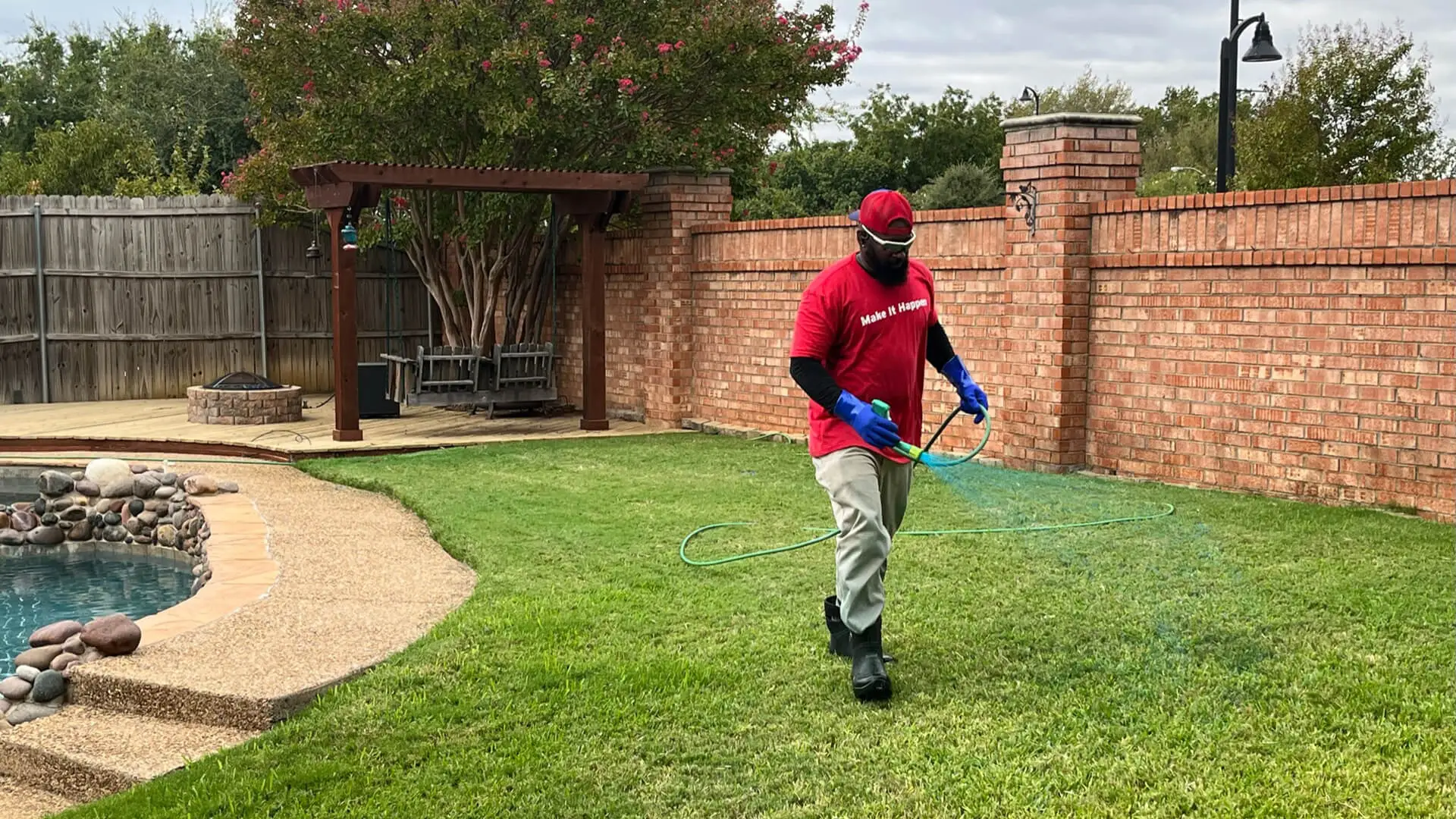How to Water Your Lawn Correctly in Texas

Your lawn in Texas needs to be properly watered throughout the year to remain healthy and green. For optimal results, it should receive about 1-1.5 inches of water per week and you should water your grass twice a week to reach this goal. This schedule is ideal because it provides enough time for the water to soak into the soil without causing overwatering. When it comes to the best time to water your lawn, early mornings tend to work best. That's because watering during cooler times helps prevent evaporation, allows your grass to absorb the water effectively, and reduces the risk of lawn disease development. Following this watering schedule will help keep your lawn hydrated and encourage strong root development!
Your lawn should receive about 1-1.5 inches of water per week.

The key to keeping your lawn in Texas healthy and looking its best throughout the growing season is proper hydration. In order to achieve this, your turf needs to receive approximately 1-1.5 inches of water per week. Watering less than this amount can lead to drought stress, which can cause brown patches and even result in weakened grass that is more susceptible to stressors. On the other hand, watering too much can also have negative effects such as nutrient runoff or the development of lawn diseases. By making sure your lawn receives around 1-1.5 inches of water per week, you can ensure that your lawn receives just the right amount of water to thrive.
Make Sure to Always Use Fertilizer & Weed Control Treatments Together
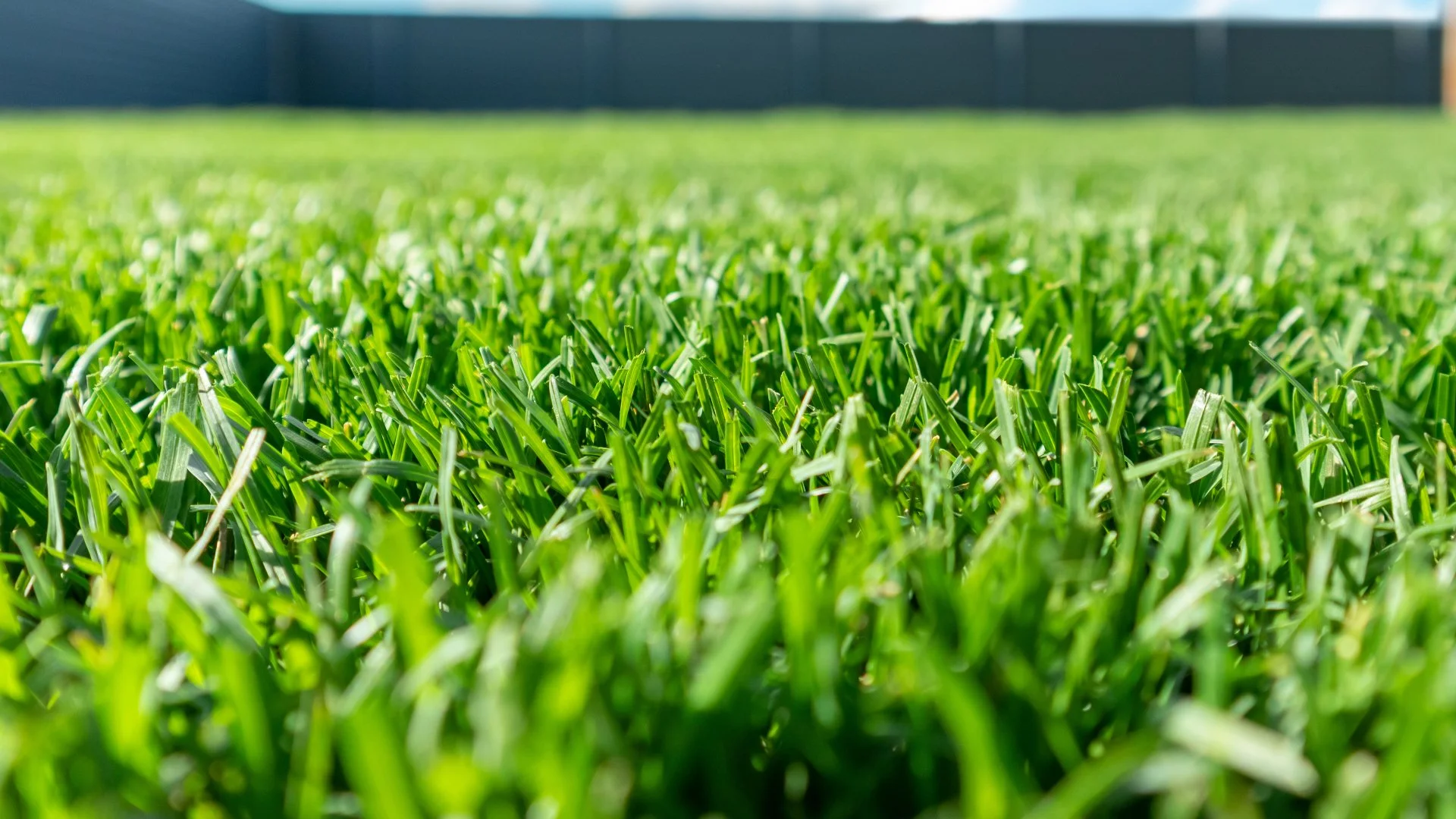
Don't make the mistake of either only fertilizing or only applying weed control treatments to your lawn in Texas. These two lawn care services should always be used together to promote a strong, healthy lawn that's also free of weeds! Using one without the other could result in a less-than-ideal outcome. For example, when you fertilize without applying weed control treatments, you're not only feeding your grass but the weeds as well, encouraging them to grow stronger. If you apply weed control treatments without fertilizer, you'll create a weed-free lawn but not necessarily a healthy one, as it might still lack proper nutrients. When you combine these two lawn care services together, however, you can ensure your lawn receives the nutrients it needs without having to compete with those pesky weeds, producing a robust, weed-free lawn!
What happens if you fertilize without applying weed control treatments?
Applying fertilizer to your lawn is a great way to provide your grass with the nutrients it needs to grow strong and healthy. However, just like grass, weeds utilize nutrients to grow strong as well. If you fertilize your lawn without applying weed control treatments, you won't just be feeding your grass but the weeds, too, making them stronger. This can make your weed problem worse, and it can negatively affect the health of your grass because the weeds will be stealing some of the nutrients that were meant for it.
Fertilizer treatments ...
Pre-Emergent Weed Control: What Is It & Does My Lawn Need It?

If you're wondering whether your lawn in Texas needs pre-emergent weed control, the answer is yes! Pre-emergent weed control is a highly effective treatment that prevents weeds from sprouting on your turf. It does this by creating a barrier in the soil that newly germinated weeds can't penetrate, stopping them before they even get the chance to pop up and cause problems. As a result, it drastically reduces the population. These treatments should be applied four times a year: pre-spring, early spring, fall, and late fall. However, you'll also want to utilize post-emergent weed control throughout the year to eliminate any existing weeds on your lawn.
What is pre-emergent weed control?

Pre-emergent weed control is an herbicide treatment that prevents weeds from sprouting on your lawn and causing problems in the first place. It's applied across your entire turf and seeps into the soil, creating a protective barrier that newly germinated weeds can't penetrate. So, as they try to grow further and access the resources they need, it will stop them from doing so.
Does my lawn need pre-emergent weed control?
Your lawn needs pre-emergent weed control because it drastically reduces the number of weeds that pop up throughout the year. Without this treatment, you could end up with a lot of weeds. Not only does this drag down your lawn's curb appeal,...
What Lawn Care Does My Grass in Keller, TX Need This Fall?
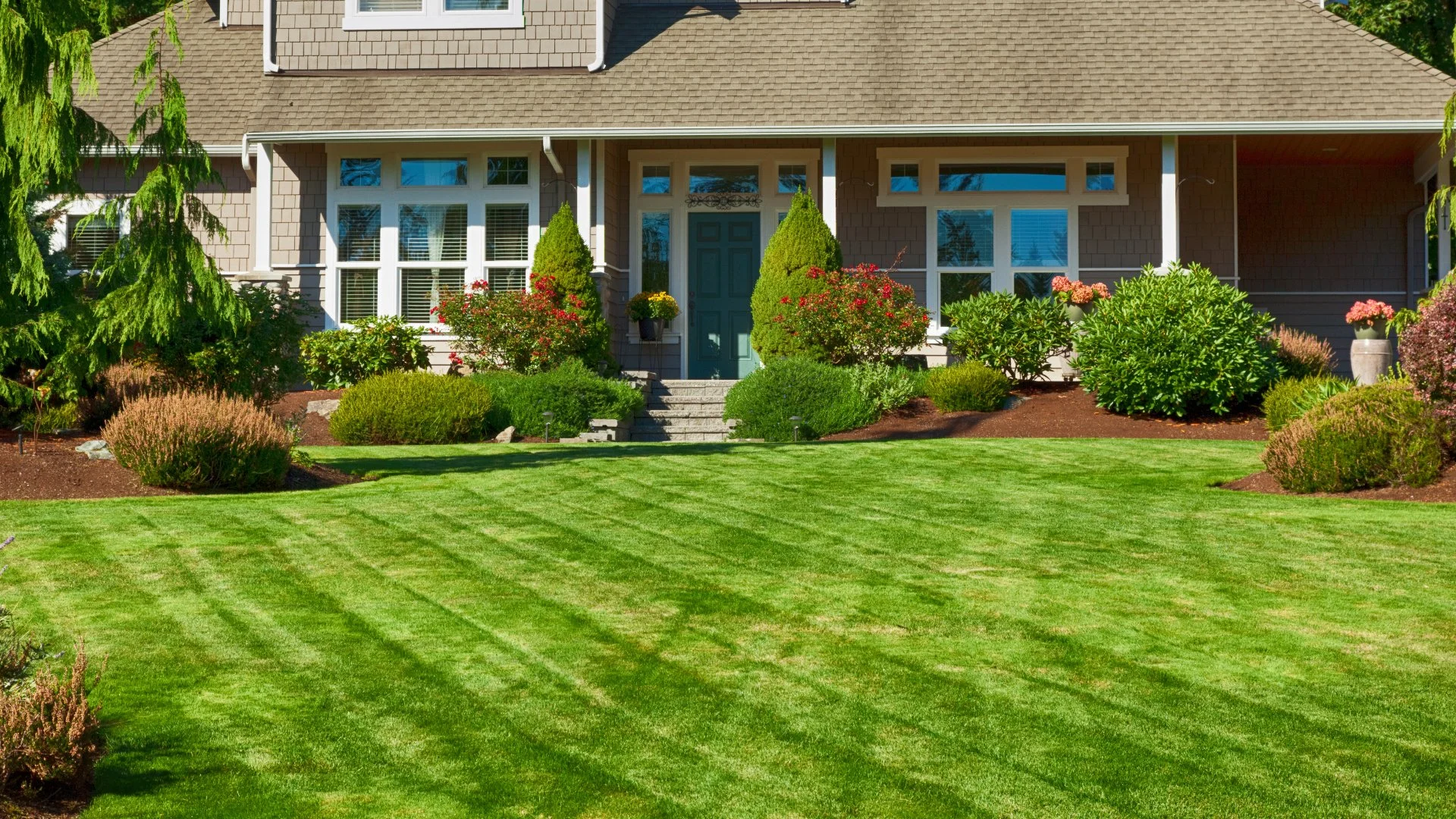
The fall season is a great time of year for your lawn in Keller, TX. Your grass will be preparing to go into winter dormancy and it needs the right care during this time to ensure that it survives until spring. One way to help your lawn prepare for the winter is by using pre-emergent weed control treatments. These treatments prevent weeds from sprouting through the soil and causing problems on your lawn. You should apply these treatments in early fall as well as in late fall so that you can get ahead of any weeds before they have a chance to grow. Another important thing you need to do during the fall is to use post-emergent weed control treatments. Post-emergent treatments are designed to eliminate any existing weeds on your property. The last thing you should do this fall is to administer a winterizer treatment. This type of treatment helps your lawn survive the cold winter months. For the best results, you should hire pros to administer these treatments to ensure they are applied correctly, at the right time, and that an effective product is used.
Use pre-emergent weed control treatments in early fall and late fall.
Pre-emergent weed control treatments are very effective at preventing new weeds from emerging on your lawn. It works by creating a barrier in the soil that newly germinated weeds cannot penetrate. In order for this type of treatment to work effectively, you need to apply it in early fall. That's because if you wait too long, then many types of weeds...
3 Things You Should Check on Your Lawn Mower Before Cutting Your Grass
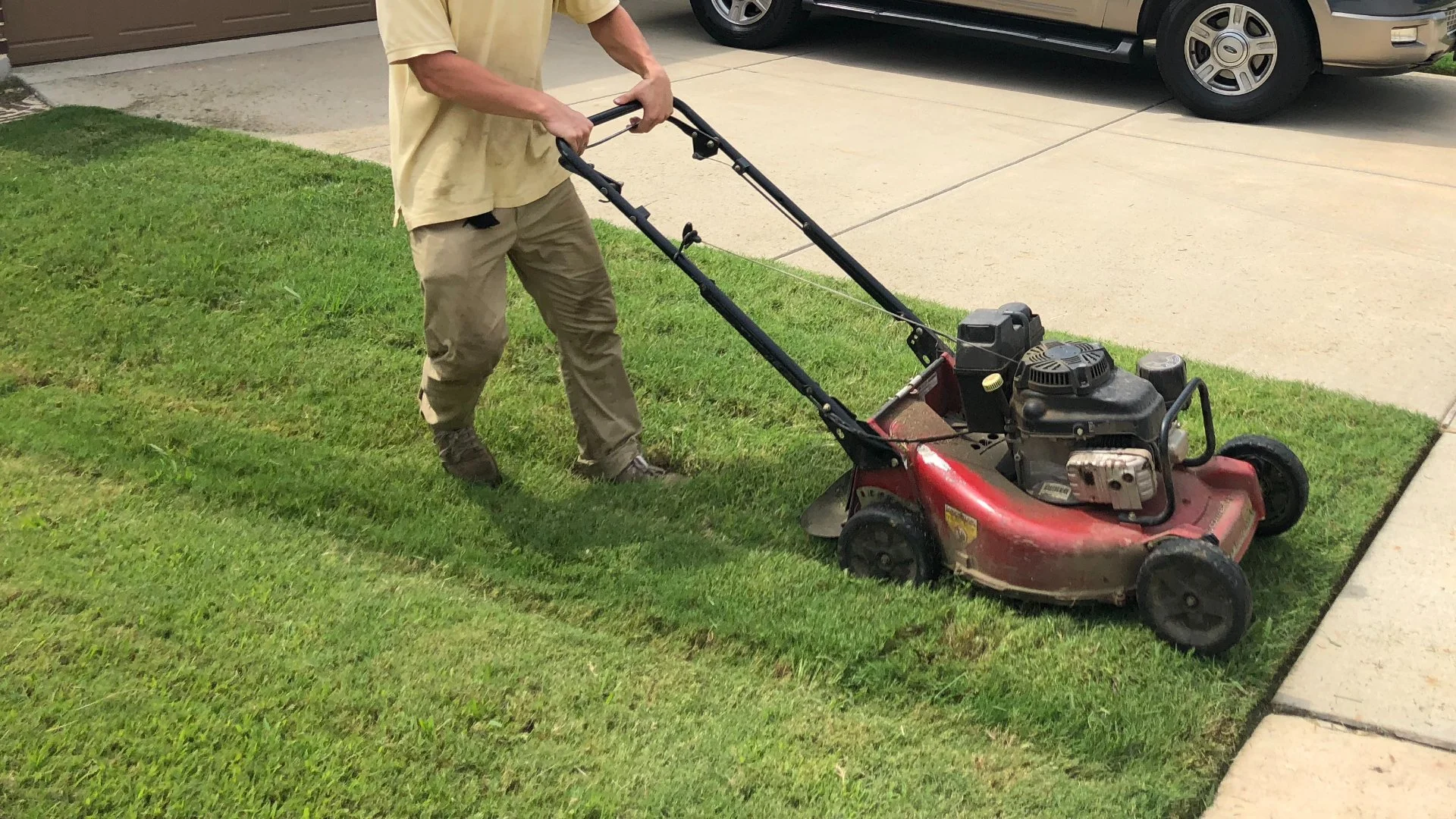
Before cutting your grass here in Texas, you need to check a few things on your lawn mower to ensure it can do its job well and everything goes smoothly. The first thing you want to check is the sharpness of the blades. When they're sharp, they make cleaner cuts, whereas when they're dull, they can rip or tear the grass blades. You also want to ensure the mower deck height is set properly for your specific turf type, as some may need to stay longer while others can tolerate going shorter. The last thing you should check before cutting your grass is the engine oil. Dirty oil can affect how efficiently the engine runs, so you'll want to keep it clean to prevent any potential damage. By checking these three things on your lawn mower, you can ensure a smooth mowing experience and keep your lawn looking great!
1. Check that your lawn mower's blades are sharpened.

One of the most important things you need to check on your lawn mower before cutting your grass is that the blades are sharpened. Sharp blades make cleaner cuts, which not only keeps the grass blades looking neat but healthy, too. On the other hand, dull mower blades can negatively impact your lawn because they have a tougher time cutting through it, potentially ripping or tearing the grass. When this happens, it hinders its health and makes it more susceptible to diseases. Because of this, you'll always want to mow your lawn with sharpened blades so that you don’t end up...
What Nutrients Does Your Lawn Need to Grow Healthy & Beautiful?
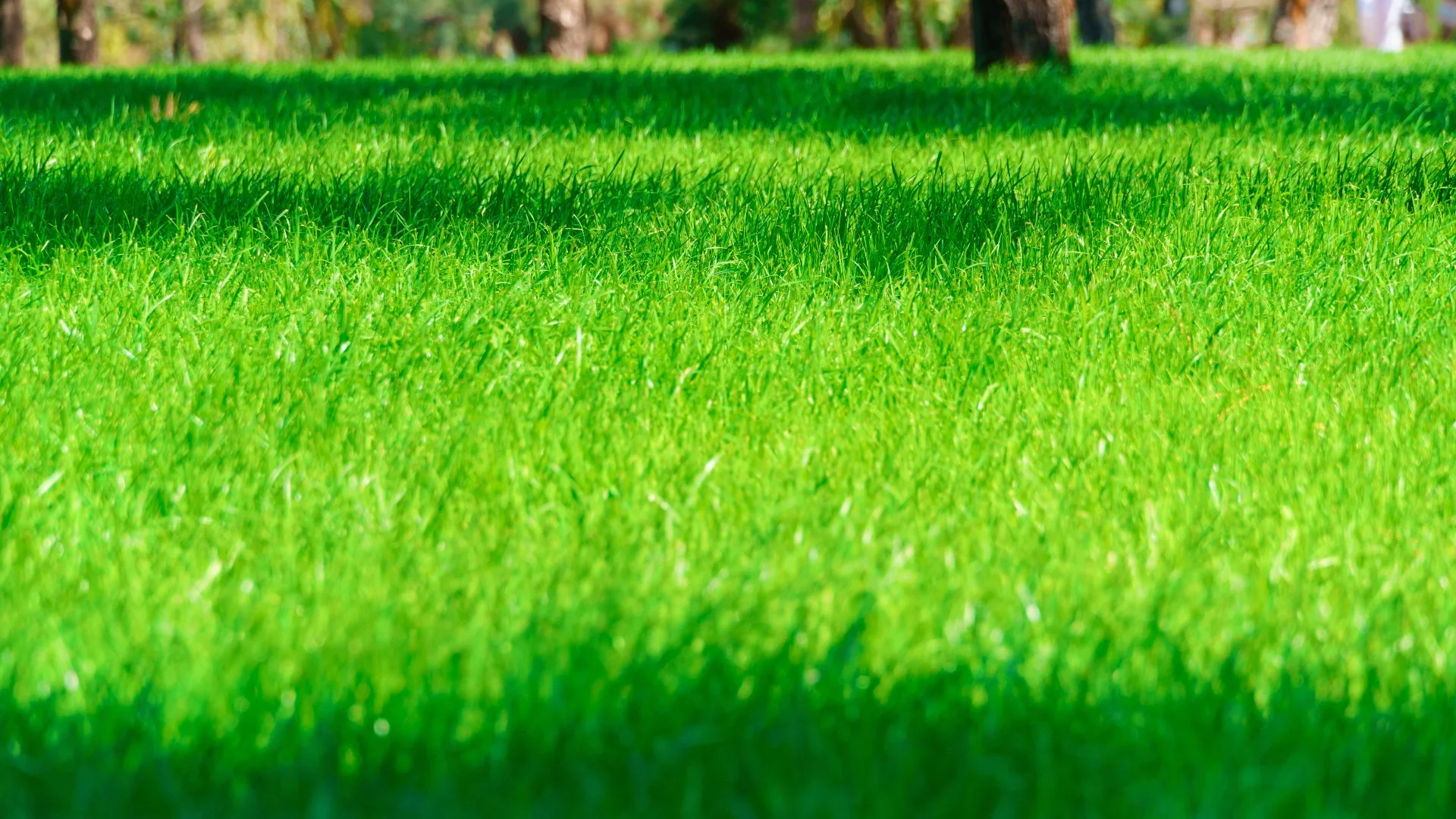
Your lawn in Texas needs various nutrients to grow healthy and beautiful. Macronutrients are the primary essential ones it needs in larger quantities, which include nitrogen, phosphorus, and potassium. These three are crucial for helping your grass develop strong roots, maintain its vibrant green color, and withstand stressors. However, it also needs micronutrients like copper, iron, and zinc to promote healthy growth and robust root systems, strengthen its cell walls, aid in enzyme activation, and encourage chlorophyll production. To ensure your lawn receives everything it needs to thrive, you should enroll in a fertilization program that also comes with applications of micronutrients.
What macronutrients does your lawn need?
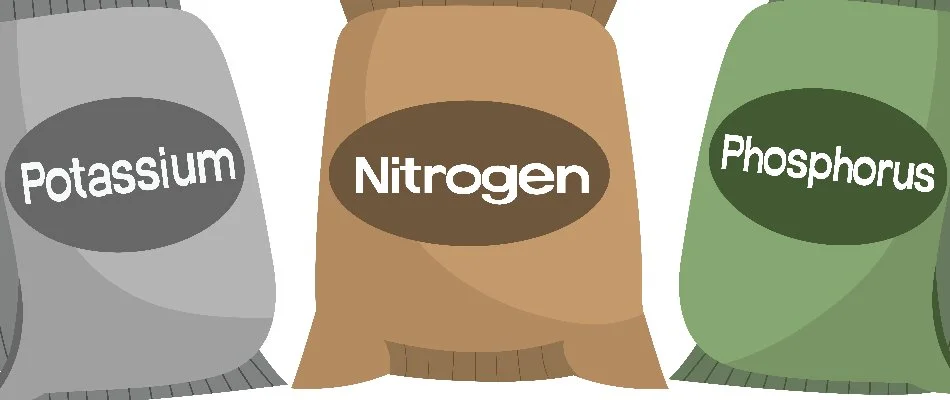
The three macronutrients your lawn needs to thrive include nitrogen, phosphorus, and potassium. These nutrients are vital for keeping your turf healthy and looking great throughout the year. Here's some more information about what each provides:
- Nitrogen helps your grass produce chlorophyll, which gives it its desirable green color. Chlorophyll also contributes to photosynthesis, which feeds and energizes your lawn, thus promoting its health and vigor.
- Phosphorus helps strengthen your turf's roots and encourages deep, robust systems. With healthier roots comes healthier grass.
- Potassium aids in improved water retention and nutrient uptake, plus thickens your lawn's cell walls. That way, your grass is strong...
How to Keep Your Lawn in Texas Weed-Free
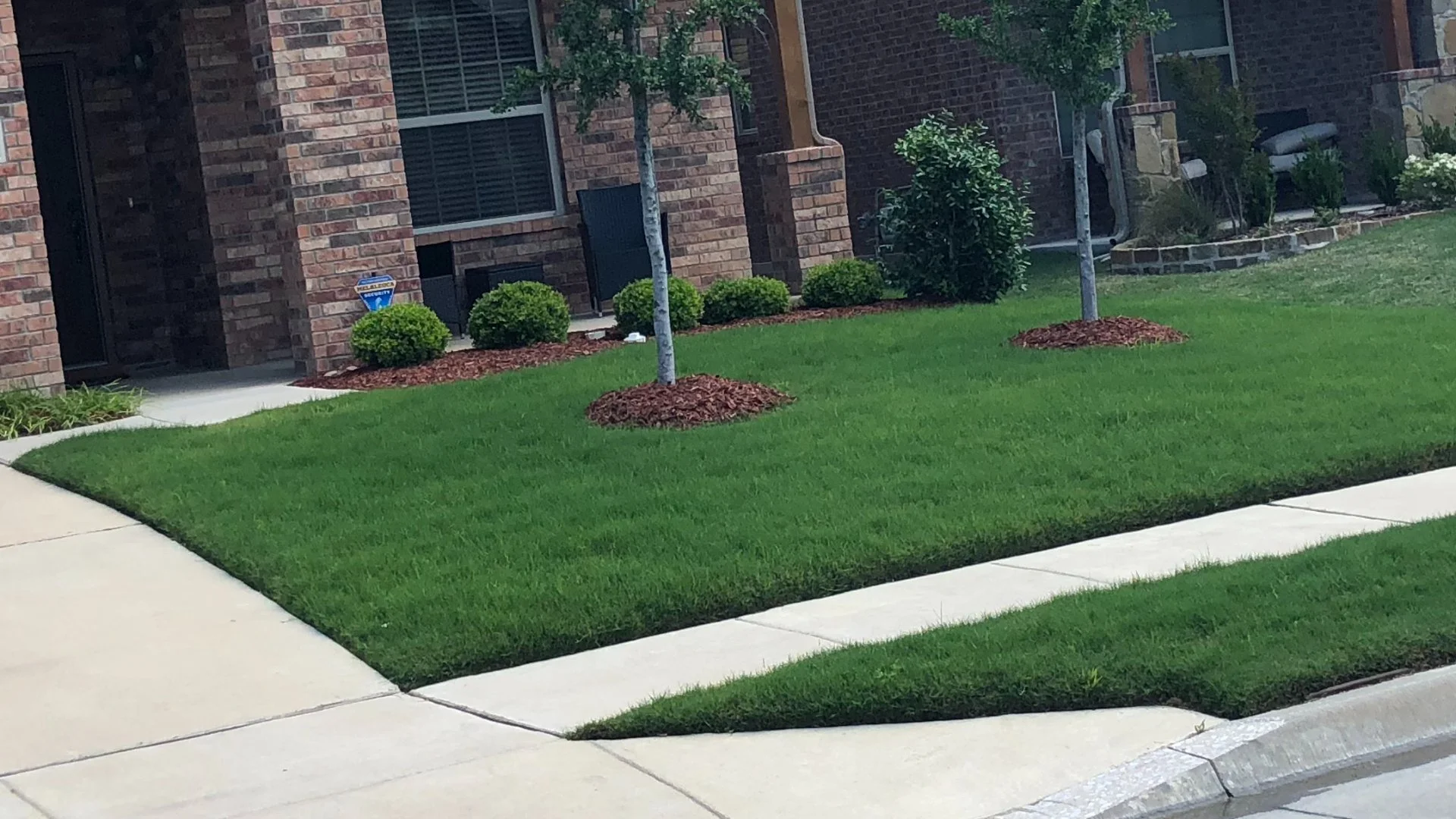
Weeds are a nuisance for your lawn in Texas. Not only do they drag down its curb appeal, but they also steal nutrients and other resources it needs to stay healthy! Fortunately, you can get ahead of these pesky plants before they sprout with pre-emergent weed control treatments, which you should apply at specific times to prevent them from causing problems in the first place. You'll also want to utilize post-emergents whenever you notice existing weeds, as these treatments will effectively eliminate them. Using pre- and post-emergents together will ensure you cover both ends of the weed life cycle and achieve a weed-free lawn!
Apply Pre-Emergent Weed Control to Prevent New Weeds From Growing on Your Lawn

Pre-emergent weed control treatments are essential for preventing new weeds from sprouting through the surface and causing problems for your lawn in the first place. These applications blanket your turf, absorbing into the soil and prohibiting newly germinated weeds from growing past a certain point. However, you'll want to administer them at the correct times to ensure maximum effectiveness.
The first pre-emergent weed control application should be in late winter/pre-spring. This timing ensures the treatment has enough time to sink into your soil and block newly germinated spring weeds from surfacing. The second application should be in early spring to build off the last and heighten your lawn's defenses against spring and summer weeds. You'll ...
Should You Mulch or Bag Your Grass Clippings?
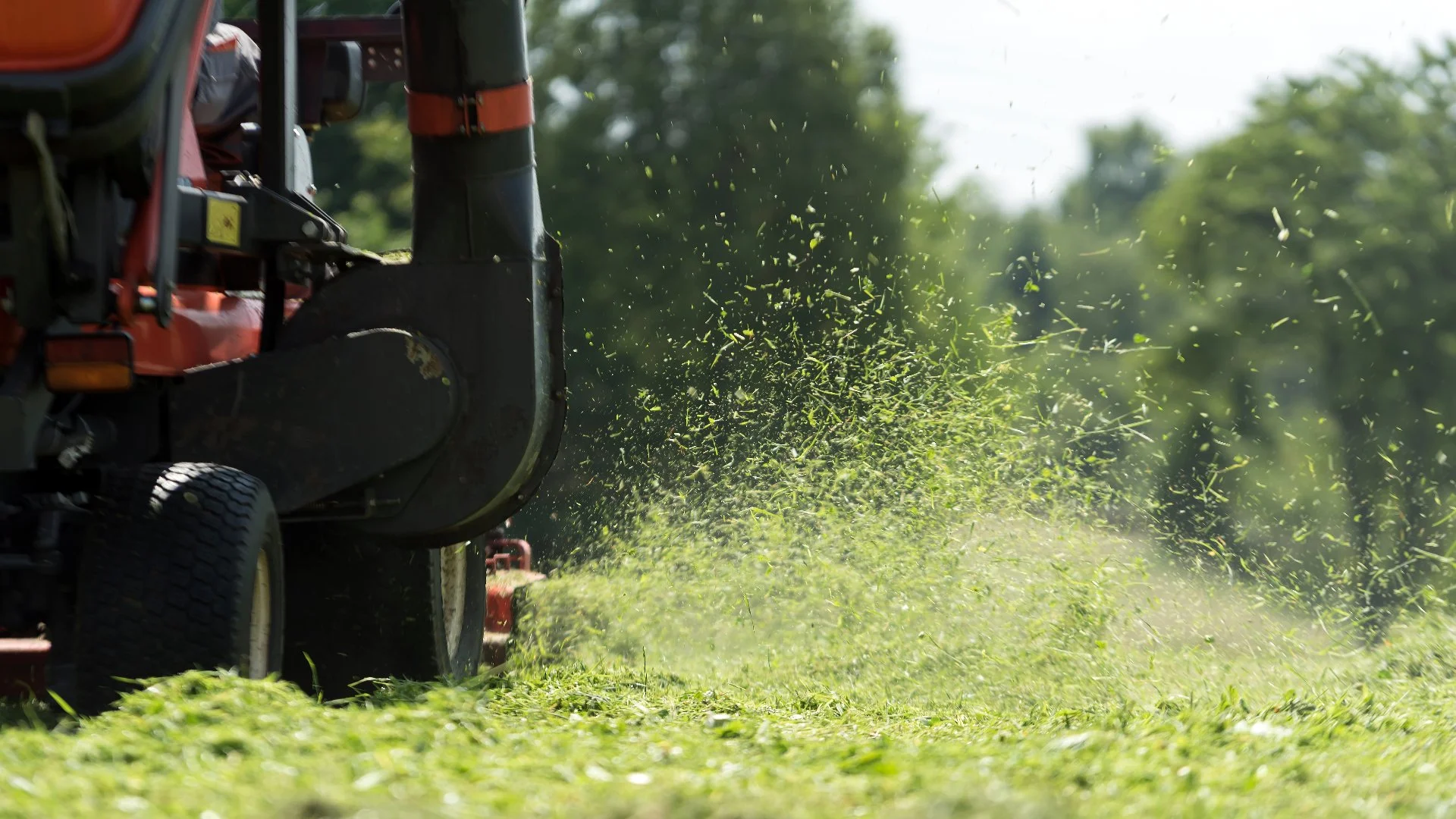
Mowing your lawn in Texas is crucial to keeping it manicured and promoting optimal growth. However, it begs the question: should you mulch or bag your grass clippings afterward? While mulching means going over them again with specialized equipment to cut them down before leaving them on your lawn to decompose, bagging involves gathering and removing them. The best thing to do is to mulch them, as they'll return nutrients to your soil as they break down and serve as a natural fertilizer. Not only that, but it's also less effort to leave them rather than going over your turf again to collect them!
What's the difference between mulching and bagging your grass clippings?
After mowing your lawn, there are two things you can do with the grass clippings: mulch or bag them. Mulching means going over them again with specialized blades to cut them down further before leaving them on your turf, where they'll decompose. Since grass clippings mainly consist of water and are mulched into even smaller pieces, they don't take long to break down. On the other hand, bagging involves gathering and removing them after you mow your lawn. When deciding whether you should do one or the other, the best option is to mulch them.
Mulching Your Grass Clippings Will Return Nutrients to Your Soil as They Decompose
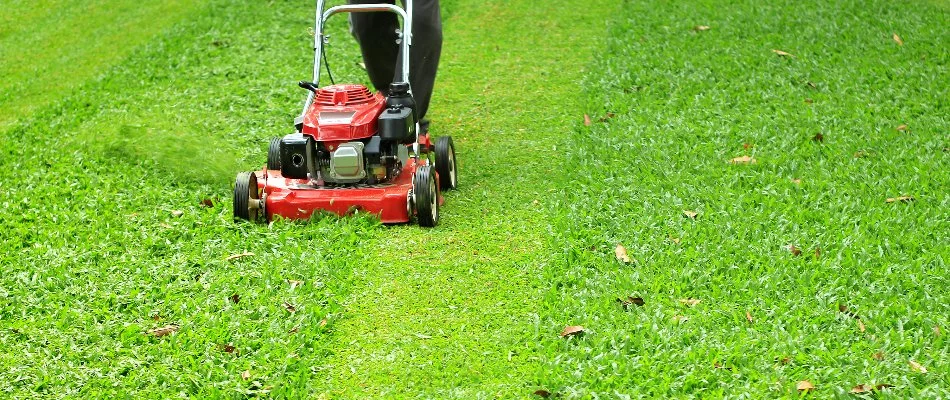
The grass clippings left behind after mowing your lawn are full of vital nutrients it needs, including nitrogen, phosphorus, and potassium. So,...
4 Huge Mistakes You Could Be Making While Mowing Your Lawn
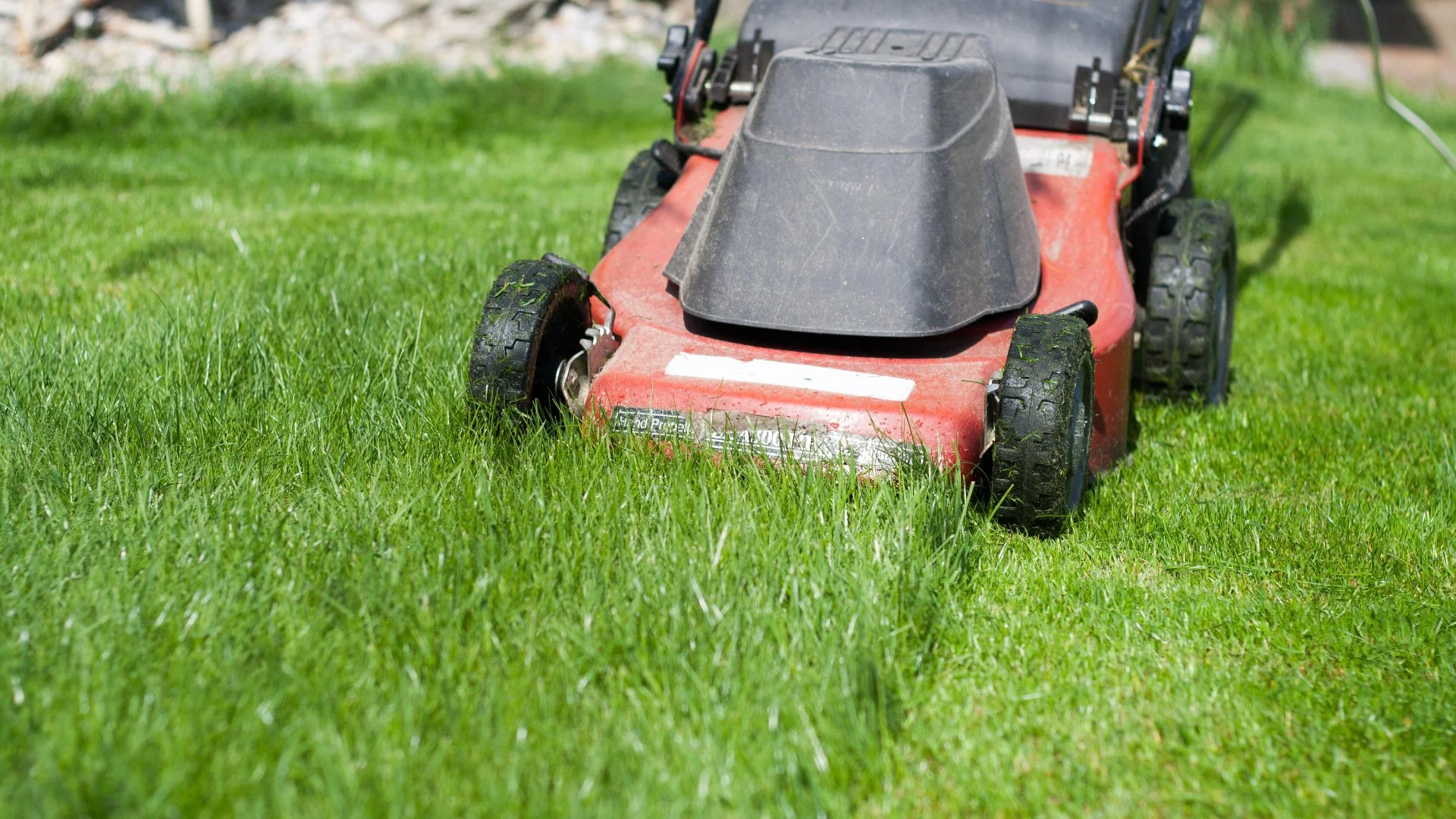
While mowing your lawn in Texas is crucial for keeping it well-maintained, it's equally important to do it right. Doing this maintenance task may sound straightforward, but it's possible to make huge mistakes that can jeopardize its health and curb appeal! For example, mowing with dull blades can rip the grass rather than cut through it cleanly, making it more susceptible to stressors like lawn diseases. You also may not be rotating your mowing patterns each time, which can cause ruts to form and push the grass in one direction. Another common mistake is bagging the grass clippings; these clippings are full of vital nutrients, and removing them will take away your lawn's chance to access them. Finally, mowing at the wrong height for your turf type can put additional stress on it, especially if it's too short.
1. Mowing Your Lawn With Dull Blades
One of the huge mistakes you could be making while mowing your lawn is doing so with dull blades. While sharpened blades will make clean cuts through the grass, dull ones won't, but rather rip and tear it. As a result, not only will this make your lawn appear choppy and uneven, but it'll also hinder its health and make it more susceptible to issues like lawn diseases. Because of this, it's vital to regularly sharpen your mower's blades to keep everything uniform and avoid putting additional stress on your grass.
2. Not Rotating Your Mowing Patterns Each Time You Cut Your Grass

How Often Should You Be Mowing Your Lawn in Texas?
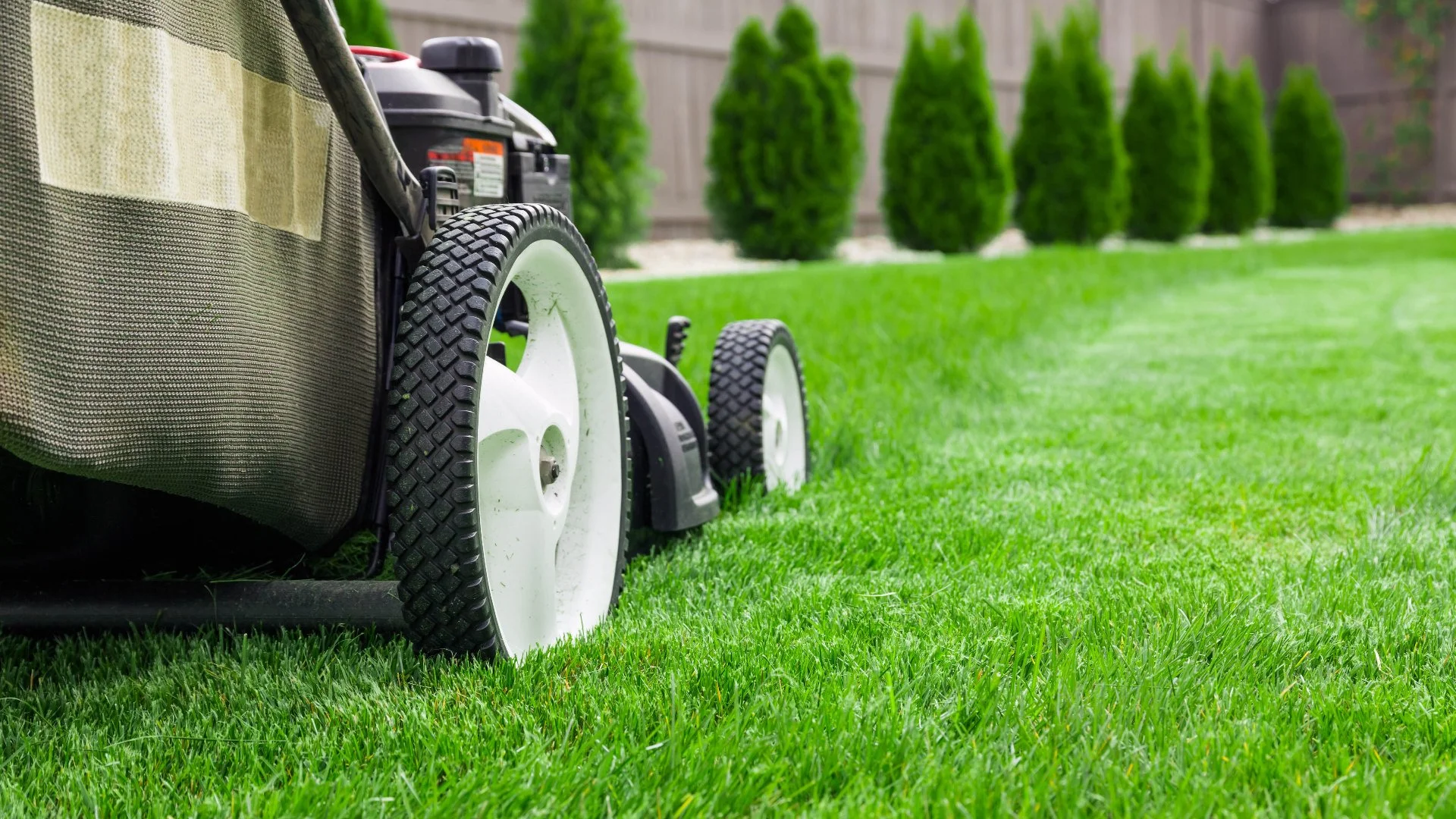
Mowing your lawn in Texas is a crucial maintenance task you should do all year, as it keeps it manicured and healthy, plus boosts your property's curb appeal. However, the frequency changes depending on the season. So, how often should you mow? You'll want to do it bi-weekly in March for the start of the season, then switch to weekly from April until October, as this is when your lawn grows the most. In November, you can reduce mowing to bi-weekly again since it won't need it as often. Then, from December until February, you should only do it once a month to avoid harming your grass since it isn't actively growing.
You should mow your lawn bi-weekly in March and weekly from April until October.
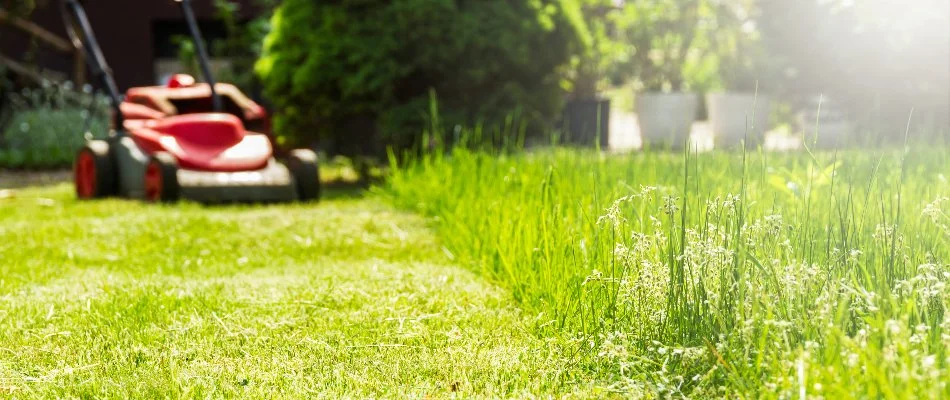
During the winter, your lawn in Texas goes dormant to preserve its resources and strength. Once spring arrives in March, it symbolizes the start of the new growing season and when it emerges from dormancy. Because of this, you should mow your grass bi-weekly during this month to stimulate new growth. Then, from April until October, you'll want to do it weekly to keep up with it since it's now actively growing. Following this schedule during the most crucial period of the year will keep your lawn manicured and continue bolstering its overall health.
Switch Back to Bi-Weekly Mowing in November for Your Lawn in Texas
As the growing season ends in November, you'll want to reduce how often you mow your lawn in Texas to bi-weekly again. This...

